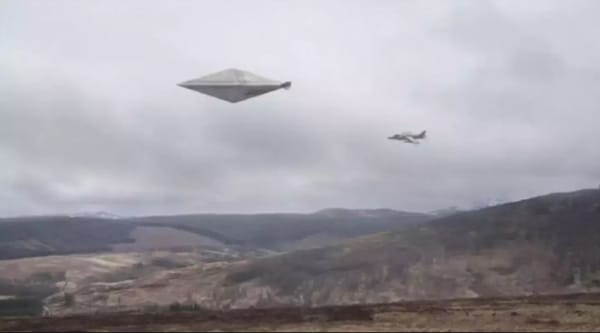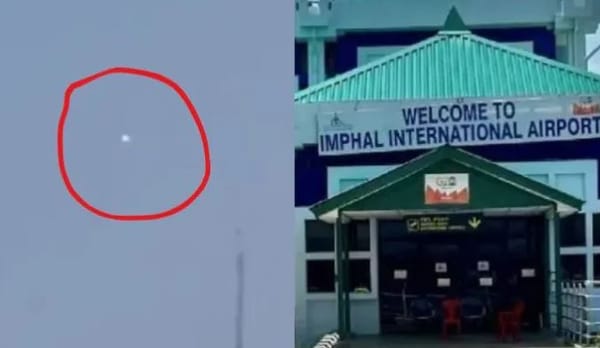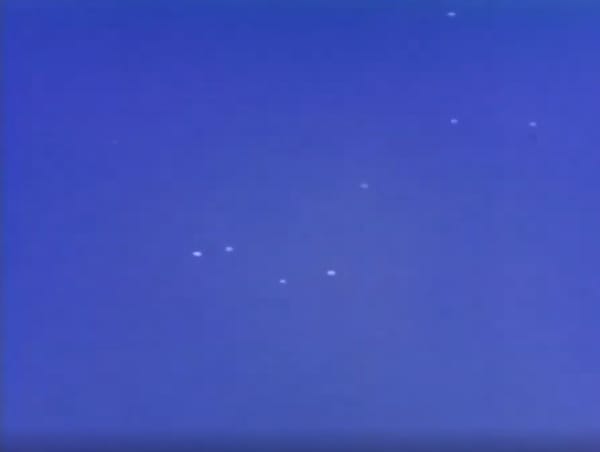The RB-47 UFO Encounter

In 1957, the RB-47 UFO encounter became one of the most intriguing incidents in the history of unidentified flying objects. On July 17, a U.S. Air Force reconnaissance aircraft, the RB-47 Stratojet, was on a routine mission over the Gulf of Mexico when its crew reported an unusual sighting. The crew observed a series of strange lights and an unidentified object that exhibited flight characteristics beyond those of known aircraft. This incident not only raised questions about the nature of the object observed but also ignited discussions about the potential existence of extraterrestrial life and advanced technology beyond what was understood at the time.
The significance of the RB-47 encounter extends beyond the immediate perplexity of the sighting; it marked a pivotal moment in military and public interest in UFO phenomena. It contributed to the growing body of evidence and speculation regarding aerial phenomena, leading to increased investigations by military agencies and heightening public fascination with the possibility of extraterrestrial visitation. As one of the early cases involving military personnel and a direct encounter with an unidentified object, the RB-47 incident continues to be a focal point for UFO researchers, historians, and enthusiasts, serving as a cornerstone in the ongoing quest to understand the unknown.
Background
The 1950s were marked by intense geopolitical tensions known as the Cold War, a period characterized by a rivalry between the United States and the Soviet Union. As both superpowers engaged in an arms race and expanded their military capabilities, the skies became a critical theater for reconnaissance and surveillance operations. The fear of enemy aircraft intrusions and the need for intelligence gathering pushed military technology and strategies to new heights. This environment fostered a sense of urgency around monitoring foreign air activity, making the missions of aircraft like the RB-47 particularly significant during this time.
The RB-47 Stratojet was a strategic reconnaissance aircraft developed by Boeing and introduced into service with the U.S. Air Force in the mid-1950s. It was a variant of the B-47 bomber, specifically designed for high-altitude reconnaissance missions. The aircraft featured a sleek, swept-wing design and was powered by six turbojet engines, allowing it to achieve high speeds and altitudes. The RB-47 was equipped with sophisticated cameras and electronic sensors to gather intelligence on enemy positions, troop movements, and missile sites. Its range and capabilities made it an essential asset for the U.S. Air Force during the Cold War, tasked with providing critical information to support national security objectives.

On the day of the incident, the RB-47 was conducting a routine reconnaissance mission over the Gulf of Mexico. The objective was to monitor enemy naval activities and collect intelligence that could inform U.S. military strategy in the context of heightened tensions with the Soviet Union. As the crew flew their mission, they were trained to be vigilant for any unusual aerial activity, including potential threats from enemy aircraft. The nature of the mission required not only technical expertise but also a heightened awareness of the skies, setting the stage for the extraordinary encounter that would soon unfold.
The Encounter
The RB-47 UFO encounter occurred on July 17, 1957, over the Gulf of Mexico. The incident unfolded while the reconnaissance aircraft was conducting a routine mission to gather intelligence in a region that was strategically important during the Cold War. The location, situated away from coastal radar installations, provided a unique environment for the encounter, as it allowed for an extended and unobstructed view of the skies.
Crew Members Involved
The RB-47 was crewed by a team of experienced personnel, consisting of six members who played vital roles in the aircraft's operation and mission execution. The crew included:
- Captain William “Bill” D. Bowers - the pilot in command, responsible for flying the aircraft and navigating the mission.
- First Lieutenant John H. Denny - the co-pilot, assisting in navigation and aircraft control.
- Major James C. Smith - the electronic warfare officer, monitoring communications and radar signals.
- Technical Sergeant John S. Thomas - the radar operator, tasked with detecting and tracking airborne objects.
- Sergeant Charles A. Hill - the photographer, responsible for documenting intelligence.
- Sergeant Richard J. Patton - the flight engineer, ensuring the operational integrity of the aircraft systems.
These crew members brought a wealth of training and experience to the mission, which would prove crucial during their unexpected encounter.
Description of the Sighting
As the RB-47 flew over the Gulf of Mexico, the crew suddenly spotted a series of bright lights in the sky. Initial confusion turned into shock as they observed an object that appeared to be a solid, glowing entity. The object was described as being elliptical or cigar-shaped and emitted a white, pulsating light.
Throughout the encounter, the crew reported that the unidentified object maneuvered with remarkable agility, performing movements that exceeded the capabilities of conventional aircraft. It displayed sudden accelerations and sharp turns, all while maintaining a steady altitude. The lights changed colors and intensity, further adding to the eerie nature of the sighting.
The crew attempted to visually track the object and record its movements, while also communicating their observations with air traffic control. Simultaneously, the radar operator monitored the object on his radar, confirming that it was detected on the aircraft's systems, corroborating the visual sighting. The entire encounter lasted approximately 20 minutes, during which the crew experienced a mix of fear, awe, and intrigue as they faced an unexplainable phenomenon in the skies.
Details of the UFO
The unidentified flying object observed by the RB-47 crew was described as having an elongated, elliptical, or cigar-like shape. Witnesses noted that it appeared larger than conventional aircraft, with estimates suggesting a length of approximately 30 to 50 feet. The object emitted a series of bright lights, primarily white, which pulsated and changed intensity. Some crew members also reported seeing red and green hues, contributing to the overall mystery of its appearance. The combination of its unique shape and luminous characteristics set it apart from any aircraft known to the crew at the time.
Flight Characteristics
The flight characteristics of the UFO were astonishing and defied conventional aviation physics. The object demonstrated remarkable agility, performing sharp turns and rapid accelerations that would have been impossible for traditional aircraft, especially those of the 1950s. The crew observed the object as it hovered momentarily before darting away at high speeds, reaching velocities far beyond what the RB-47 could achieve. At one point, the UFO reportedly climbed to an altitude much higher than that of the reconnaissance aircraft, further showcasing its superior maneuverability and speed.
Comparison to Known Aircraft
In comparing the unidentified object to known aircraft, the crew and subsequent investigators found no suitable match. Conventional military aircraft of the era, such as the F-86 Sabre or the B-47 itself, lacked the agility and performance exhibited by the UFO. While some witnesses initially speculated that the object could be a secret experimental aircraft, the flight patterns and visual characteristics led them to dismiss this possibility.
Additionally, the UFO's ability to perform aerial maneuvers—such as instantaneous acceleration and vertical climbs—exceeded the capabilities of even the most advanced aircraft of the time. The RB-47 crew was well-versed in the specifications and performance of existing aircraft, making their observations all the more compelling. As a result, the encounter has fueled speculation about advanced technology, including potential extraterrestrial origins or highly classified military projects, as no conventional explanation could adequately account for the remarkable attributes of the UFO.
Military Response
Following the RB-47 encounter, the U.S. Air Force initiated an investigation into the sighting. The military took the crew's reports seriously, given their professionalism and the high-stakes context of Cold War reconnaissance missions. The investigation involved interviews with the crew members to gather detailed accounts of the incident, focusing on the object's characteristics, flight maneuvers, and any additional data that could provide insights into the encounter.
The Air Force also sought to determine whether the sighting was related to any known aircraft or military operations, as the security of the nation's airspace was a top priority. As part of their protocol, the incident was categorized under Project Blue Book, the Air Force’s official program for investigating UFO sightings. This allowed for a structured approach to analyzing the encounter in the context of other reported UFO incidents.
Documentation and Reports Generated
The Air Force documented the RB-47 encounter extensively, generating detailed reports that outlined the circumstances of the sighting, the testimonies of the crew members, and initial assessments of the incident. These reports included statements from each crew member, as well as technical evaluations of the RB-47’s performance capabilities during the encounter.
The documentation process also involved compiling radar data and information from other military sources to corroborate the crew’s observations. The findings were shared with higher military officials and analysts, who reviewed the incident in light of ongoing national security concerns. However, despite thorough documentation, the reports ultimately concluded that the nature of the UFO could not be definitively identified, leaving many questions unanswered.
Analysis of Radar Data
One of the critical components of the investigation was the analysis of radar data collected during the encounter. The RB-47 was equipped with sophisticated radar systems, which allowed the crew to track the unidentified object in real time. Analysts examined radar recordings to verify the object's altitude, speed, and flight path.
The radar data indicated that the object exhibited unusual movement patterns, confirming the crew’s visual accounts of rapid acceleration and sharp turns. This corroboration added credibility to the sighting, as the data showed the object moving independently of known aircraft in the area. However, despite the compelling evidence, analysts struggled to correlate the radar data with any identified aircraft or known atmospheric phenomena, further deepening the mystery surrounding the incident.
Ultimately, the combination of witness testimonies, documentation, and radar analysis contributed to an ongoing debate within military and scientific circles about the nature of UFOs and the implications for national security. The RB-47 encounter stood as a notable case in the annals of UFO history, emphasizing the challenges faced by investigators in attempting to understand phenomena that remained beyond the limits of contemporary knowledge and technology.
Eyewitness Accounts
The testimonies of the RB-47 crew members provided critical insights into the encounter, each recounting their experiences in vivid detail. Captain William D. Bowers, the pilot, described the moment they first spotted the strange lights in the sky, noting how they appeared suddenly and seemed to change colors. He emphasized the object’s remarkable speed and agility, stating that it moved in ways he had never witnessed in any aircraft.
First Lieutenant John H. Denny, the co-pilot, echoed Bowers' observations, recalling how the object seemed to dart around them. He was particularly struck by the fact that the UFO maintained a steady altitude while making sudden directional changes, an aspect he found impossible for conventional aircraft. Major James C. Smith, the electronic warfare officer, provided insights on how the onboard radar tracked the object, affirming that it appeared as a solid target, further solidifying their claims.
Other crew members, such as Technical Sergeant John S. Thomas and Sergeant Charles A. Hill, corroborated their accounts, adding specific details about the lights and their behavior. Each crew member’s testimony contributed to a coherent narrative, underscoring the shared experience they had during the encounter.
Reactions and Emotions During the Encounter
The emotions experienced by the crew during the encounter were a mix of awe, fear, and confusion. Initially, the sighting triggered a sense of excitement, as the crew was trained to observe and report unusual aerial phenomena. However, this excitement quickly transformed into apprehension as the object demonstrated flight capabilities far beyond their understanding.
As the UFO maneuvered in the skies, crew members felt a growing sense of unease. Major Smith later described the sensation of vulnerability, knowing they were in a reconnaissance mission, yet facing an unknown entity that could potentially be a threat. The gravity of the situation weighed heavily on the crew, leading to moments of tension and anxiety as they attempted to make sense of what they were witnessing.
Throughout the encounter, there was a palpable sense of camaraderie among the crew, as they worked together to document their observations and communicate their findings to air traffic control. After the incident, their reactions shifted to a mix of disbelief and curiosity, as they began to grapple with the implications of their experience. Some crew members expressed a desire to understand what they had seen, while others remained skeptical, questioning whether they had encountered an extraterrestrial craft or a classified military project.
Ultimately, the RB-47 crew's eyewitness accounts and their emotional responses during the encounter highlight not only the uniqueness of the incident but also the broader human experience of facing the unknown. Their shared experience has continued to resonate within UFO research, adding depth to the ongoing discussions about the nature of unidentified aerial phenomena.
Theories and Explanations
Possible Explanations
The RB-47 UFO encounter has prompted various theories and explanations over the years, as researchers and enthusiasts attempt to rationalize the extraordinary sighting. Some of the most common explanations include:
- Misidentified Aircraft: One of the primary theories posits that the crew may have misidentified a conventional aircraft, such as a military jet or experimental craft, particularly given the high-stakes context of Cold War operations. Skeptics argue that the lights observed could have been from a nearby aircraft, possibly obscured by clouds or atmospheric conditions.
- Natural Phenomena: Another explanation suggests that the object may have been a natural phenomenon, such as ball lightning or a meteor. Proponents of this theory argue that the lights and unusual behavior could have been caused by atmospheric conditions that distort visual perception, leading to confusion about the object’s nature and movement.
- Experimental Military Technology: Some researchers have speculated that the object could have been a top-secret military aircraft or experimental technology, developed by the U.S. or another nation. During the Cold War, many advanced aircraft were in development, and the performance characteristics described by the crew could potentially align with a classified program.
- Extraterrestrial Craft: The most popular and sensational theory is that the RB-47 encountered an extraterrestrial spacecraft. Supporters of this theory argue that the object’s extraordinary speed, maneuverability, and lack of any conventional explanation suggest a level of technology beyond human capabilities, pointing to the possibility of contact with extraterrestrial intelligence.
Ongoing Debates Among Researchers and Enthusiasts
The RB-47 encounter continues to fuel debates among UFO researchers, skeptics, and enthusiasts. Advocates for the extraterrestrial explanation often cite the crew's credibility and the corroboration of radar data as compelling evidence of an otherworldly phenomenon. They argue that the combination of eyewitness testimonies, physical data, and the inability to identify the object supports the notion of advanced technology beyond our understanding.
Conversely, skeptics maintain that the lack of definitive evidence, such as physical remains of the UFO or concrete documentation linking it to extraterrestrial origins, undermines claims of alien visitation. They emphasize the need for critical analysis of the incident, suggesting that psychological factors, such as groupthink or heightened emotions during the mission, may have influenced the crew's perceptions.
Theories regarding military involvement also persist, with some suggesting that the Air Force may have had access to advanced technology that was never disclosed to the public. This perspective is often fueled by the secrecy surrounding many military projects during the Cold War, leading to a lack of transparency and increasing speculation about what the government knew.
As new evidence and technological advancements emerge, interest in the RB-47 encounter remains strong, with ongoing investigations and discussions about the broader implications of UFO sightings. The incident serves as a reminder of humanity's enduring fascination with the unknown and the quest to understand our place in the universe.
Conclusion
The 1957 RB-47 UFO encounter stands out as a significant incident in the history of unidentified flying objects. On July 17, while conducting a reconnaissance mission over the Gulf of Mexico, the crew of an RB-47 Stratojet witnessed an extraordinary sighting of a cigar-shaped object emitting bright, pulsating lights. The encounter lasted approximately 20 minutes, during which the crew reported the object’s remarkable flight characteristics, including rapid acceleration and sharp turns that exceeded the capabilities of known aircraft.
In the aftermath, the U.S. Air Force launched a thorough investigation, documenting eyewitness testimonies and analyzing radar data. Despite the credibility of the crew and the corroborating radar evidence, the military could not conclusively identify the object, leading to various theories, including misidentified aircraft, natural phenomena, experimental military technology, and even extraterrestrial visitation. The ongoing debates among researchers and enthusiasts continue to keep the incident in the public eye, highlighting the complexities surrounding UFO phenomena.
Reflection on the Significance of the Encounter
The significance of the RB-47 encounter extends beyond the immediate perplexity of the sighting. It serves as a crucial case study that illustrates the challenges of identifying and understanding aerial phenomena in a time of heightened military secrecy and Cold War tensions. The incident has had a lasting impact on UFO research, contributing to a broader discourse about the nature of unidentified aerial phenomena and the possibility of advanced technologies, whether human-made or extraterrestrial.
As societal interest in UFOs grows, the RB-47 encounter remains a cornerstone in the exploration of humanity's fascination with the unknown. It emphasizes the importance of open-minded inquiry and critical investigation in our quest for understanding, reminding us that the skies may hold secrets yet to be uncovered. Ultimately, the RB-47 incident not only enriches the narrative of UFO sightings but also serves as a testament to the enduring quest for knowledge about our universe and the mysteries that lie within it.



